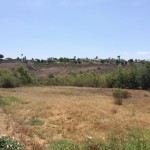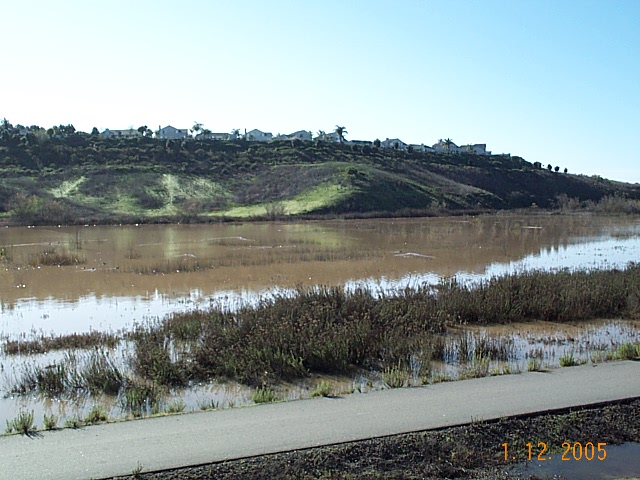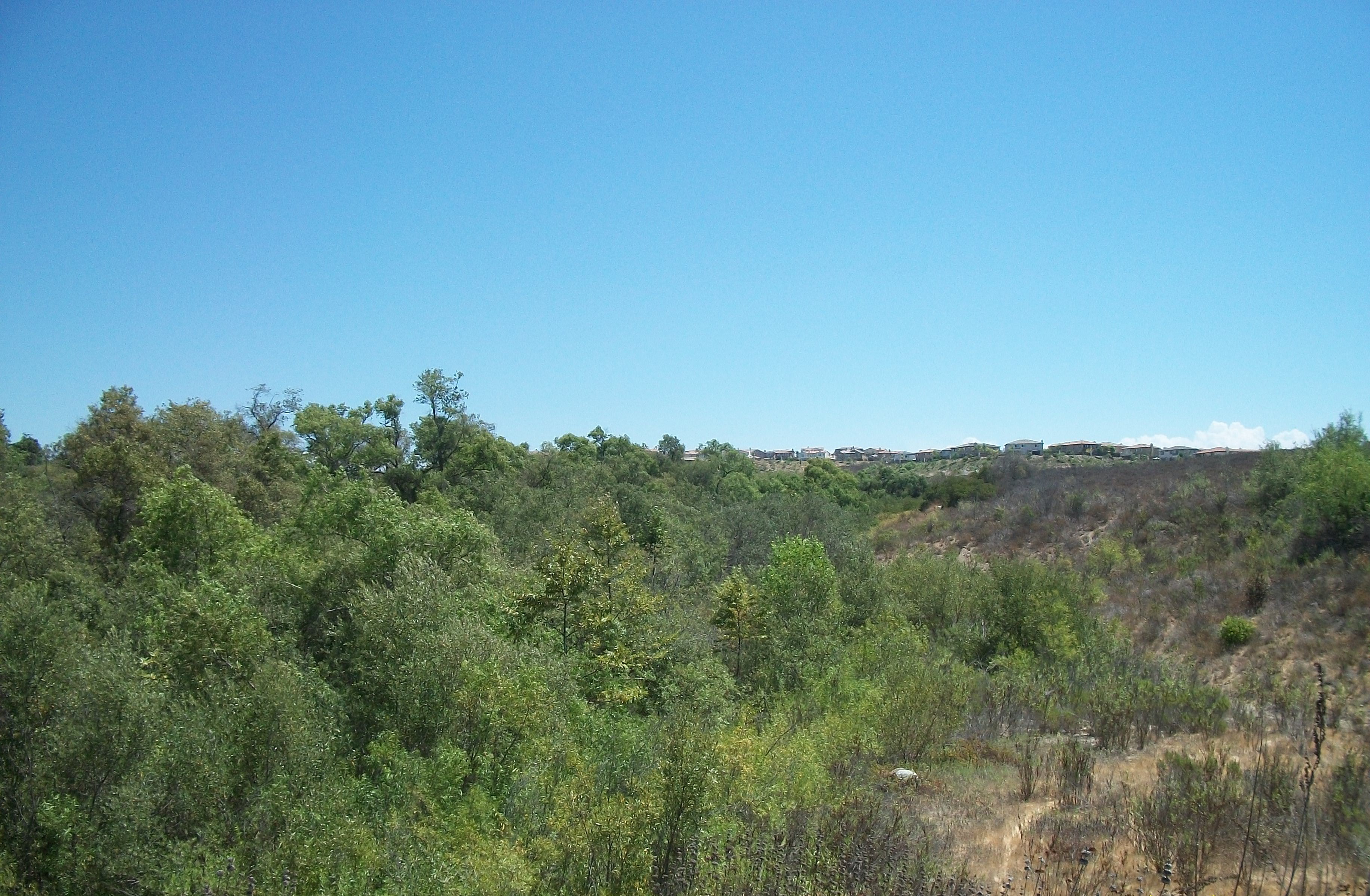
Area: 126 acres
Location: City of Oceanside, San Diego County, California
Date Acquired: 2002-2006
Acquisition Type: CNLM holds a fee title to Foss Lake and five conservation easements for the Morro Hills properties. CNLM has a long-term management agreement to protect the imperiled species and their habitats on the preserves.
Key Habitats: Coastal Scrub, Valley Foothill Riparian and Freshwater/Aquatic Wetland
Species of Special Interest to CNLM: Least Bell’s vireo (Vireo bellii pusillus) , Yellow-breasted chat (Icteria virens) and California gnatcatcher (Polioptila californica californica).
Introduction
 The Morro Hills/Foss Lake Preserve was created in 2002 for the conservation of southern willow scrub, and a federally and state listed bird, the least Bell’s vireo (Vireo bellii pusillus). This 126-acre Preserve is composed of five parcels, including the 75-acre Foss Lake parcel, a mostly fresh and alkali marsh, and the 36-acre riparian area within the Arrowwood Golf Course. The Center for Natural Lands Management (CNLM) gained fee title (Foss Lake) and conservation easements for these lands between 2002-2006. CNLM is fully responsible for all stewardship of these lands, which are some of the last remaining stands of habitat in Oceanside, California.
The Morro Hills/Foss Lake Preserve was created in 2002 for the conservation of southern willow scrub, and a federally and state listed bird, the least Bell’s vireo (Vireo bellii pusillus). This 126-acre Preserve is composed of five parcels, including the 75-acre Foss Lake parcel, a mostly fresh and alkali marsh, and the 36-acre riparian area within the Arrowwood Golf Course. The Center for Natural Lands Management (CNLM) gained fee title (Foss Lake) and conservation easements for these lands between 2002-2006. CNLM is fully responsible for all stewardship of these lands, which are some of the last remaining stands of habitat in Oceanside, California.
Conservation Significance
The Morro Hills/Foss Lake Preserve supports southern willow scrub, Diegan coastal sage scrub, and fresh and alkali marsh. Sensitive species observed include the least Bell’s vireo (Vireo bellii pusillus), coastal Calfornia gnatcatcher (Polioptila californica californica) and yellow-breasted chat (Icteria virens). Foss Lake represents a very unique part of San Diego’s natural heritage. It supports one of the only stands of alkali marsh and in heavy rain years the entire “lake” can fill with water and provide critical resources and habitat for water fowl and shorebirds.

Our Work
CNLM’s primary goal for this Preserve is to protect the habitat from invasive non-native plants and to protect the least Bell’s vireo population. The management strategies used to protect the habitat include removal of non-native plants, such as the giant reed (Arundo donax), tamarisk (Tamarix spp.), fennel (Foeniculum vulgare), and castor bean (Ricinus communis). To help protect the least Bell’s vireo, staff monitors nest productivity and removes eggs from brown-headed cowbirds which parasitize vireo nests. In addition, the use of cowbird traps may be implemented to further reduce nest parasitism. Together, these activities have increased nest success rates and vireo productivity.

Contact
For information about Morro Hills/ Foss Lake or the Center for Natural Land Management, please contact Steve Rink, Preserve Manager at srink@cnlm.org or 760.731.7790 extension 212.

